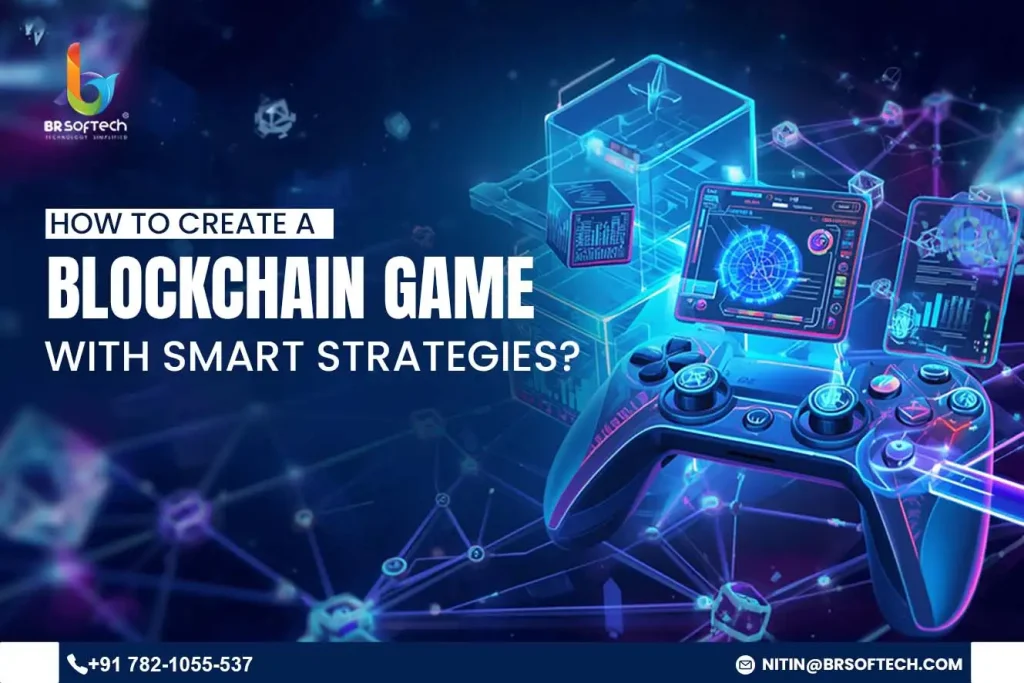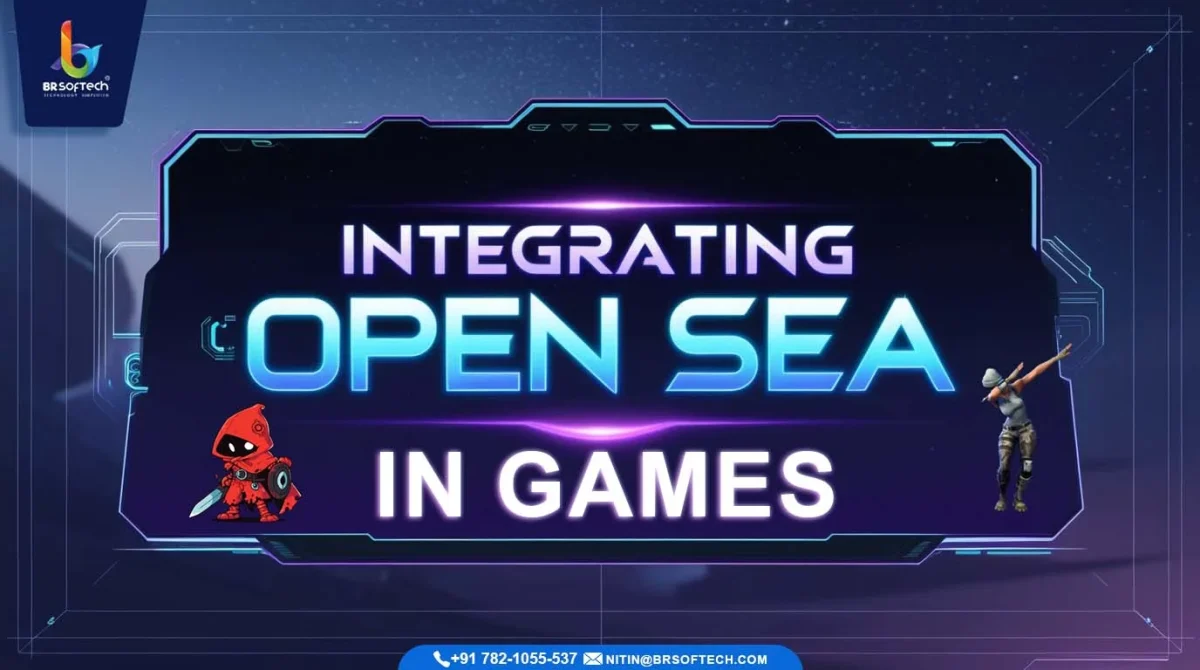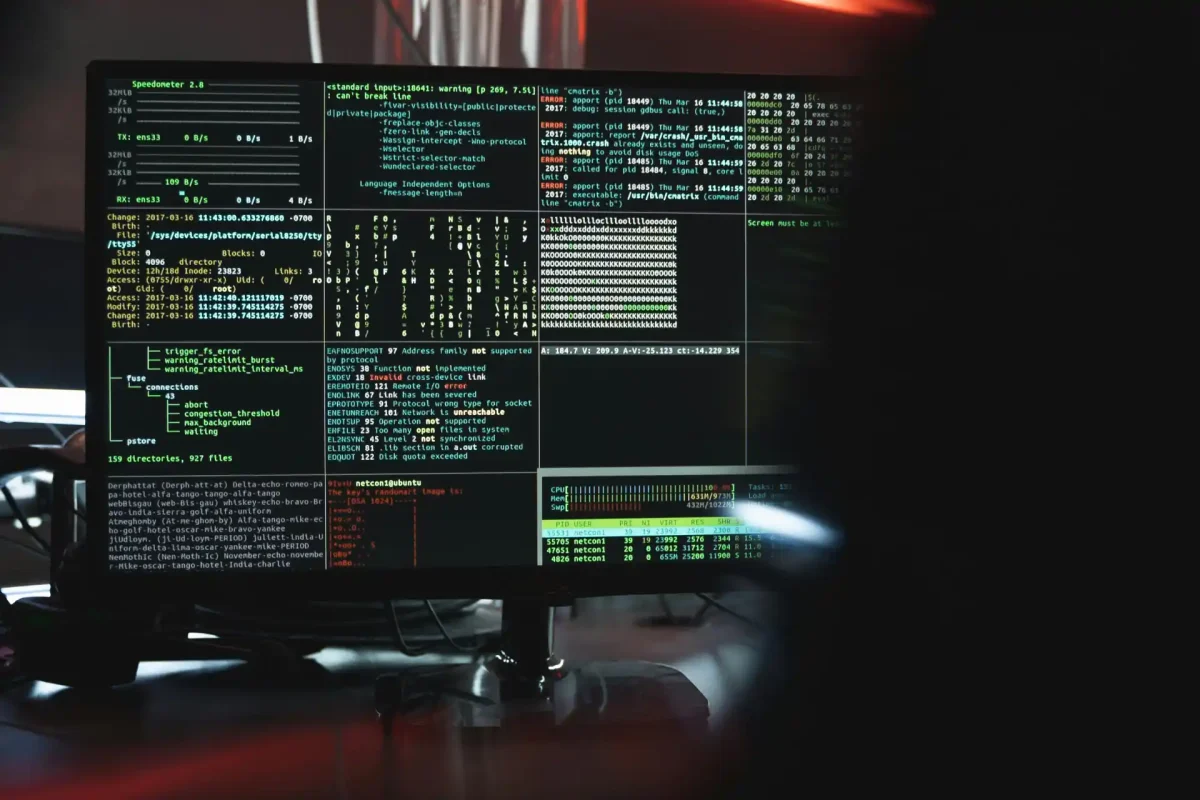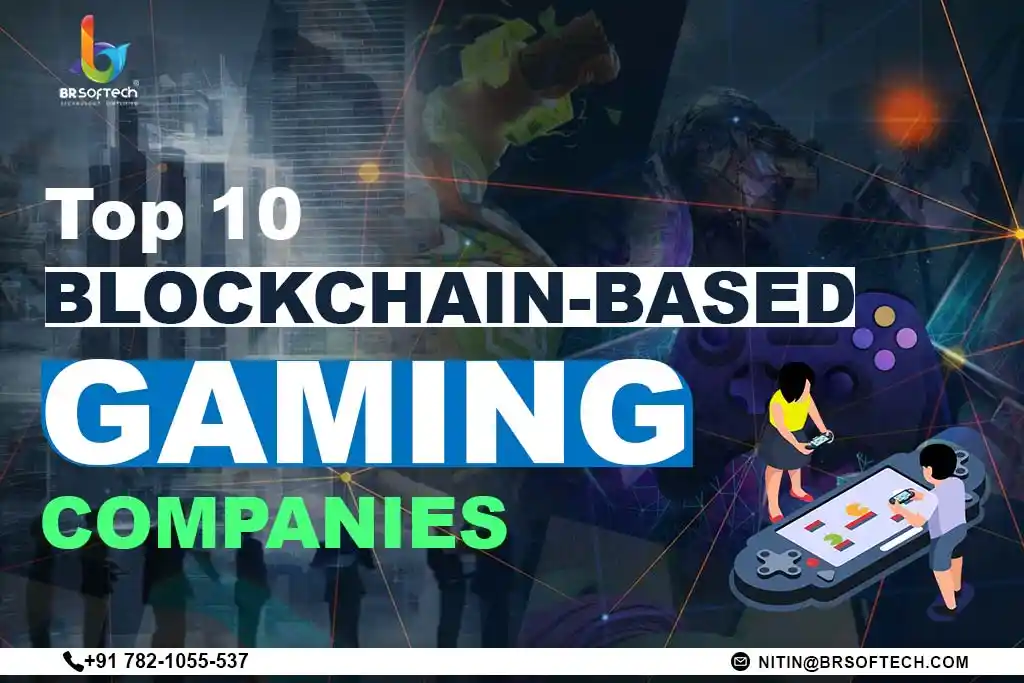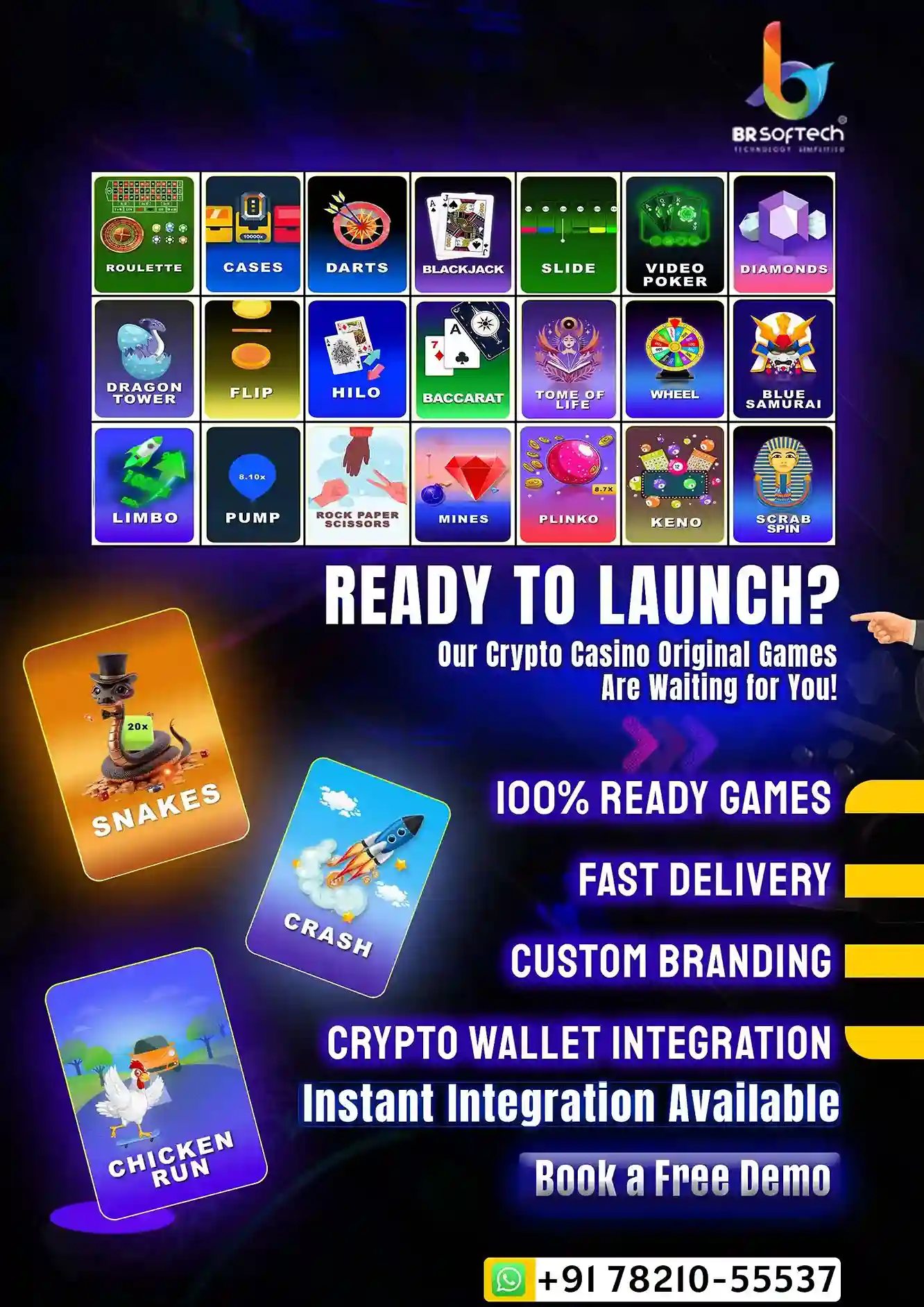Blockchain games are appreciated for their high level of security. If there’s any type of game that can foster a trustless environment, it’s certainly blockchain games. That said, creating these games can be challenging and usually involves a good deal of technical knowledge.
The gaming industry is continuously evolving, with blockchain technology leading this exciting change. Its core features, decentralization, transparency, and genuine asset ownership, unlock new opportunities. Blockchain-based games, including models like P2E and others, offer players more control and earning potential. As noted earlier, developing a risk-free blockchain game requires careful planning and vulnerability mitigation to ensure safe and enjoyable gameplay for all.
In this blog, we’ll explore the step-by-step process of creating a secure blockchain game, covering development strategies, security measures, and monetization techniques.
What is Blockchain Game Development?
Blockchain game development focus on creating fun and innovative games that run on decentralized networks. These games use blockchain to secure in-game assets and transactions, providing players with a safe and trustworthy experience. There are many wonderful benefits to blockchain game development; here are some of the key highlights.
Ownership of Digital Assets
Players have full control over their NFT-based items and cryptocurrency rewards. They manage their in-game assets, which are NFTs, directly without any interference from centralized networks, giving them a truly empowering experience.
Transparent and Secure Transactions
Blockchain ensures that every in-game transaction is thoroughly verified and permanently recorded. When you buy or sell an item in a blockchain game, smart contracts make the process smooth, ensuring the item is delivered properly and funds are securely transferred to both sides.
Play-to-Earn (P2E) Models
Players have the exciting opportunity to earn crypto rewards or NFTs just by playing, which adds a fun financial bonus. These games truly let gamers create their own income stream from the game itself, giving them extra motivation to keep enjoying and exploring.
Also Read: Unlock Success with Play-to-Earn Game Development Insights
Smart Strategies for Risk-Free Blockchain Game Development
Creating a risk-free blockchain game involves implementing smart strategies around security, stability, and scalability, which provides a stage to build credibility among players.
Use a Gameplay-First Development Philosophy
Your game should be genuinely entertaining even if all blockchain elements were removed. Ask yourself: would players enjoy this game if it didn’t offer earning opportunities? If the answer is no, you don’t have a game, you have a speculative investment vehicle disguised as entertainment. You game must include:
- Core Loop Engagement: Create compelling moment-to-moment gameplay that keeps players engaged regardless of economic incentives
- Skill-Based Progression: Ensure player skill and strategic thinking determine success more than wallet size
- Content Depth: Provide sufficient gameplay variety and progression systems to sustain long-term engagement
- Polish and Production Quality: Match or exceed production values of comparable traditional games in your genre
Design a Sustainable Economy
Creating blockchain game economies that function long-term requires sophisticated economic modeling and multiple mechanisms that balance token generation with consumption.
Token sinks remove currency from circulation, counteracting inflationary pressure from rewards and token generation. Careful control over how tokens enter circulation prevents excessive inflation while ensuring fair distribution across different stakeholder groups.
Also, successful games generate value through multiple channels that sustain operations regardless of speculative market dynamics. Revenue diversification strategies include:
- Premium Content Sales: Cosmetics, exclusive features, or convenience items purchasable with fiat currency
- Subscription Tiers: Optional premium memberships providing enhanced features or benefits
- Licensing and Partnerships: Brand collaborations, educational licensing, or white-label implementations
- Platform Services: Marketplace infrastructure, asset creation tools, or developer services that generate fees
Incremental Development and Testing
Rather than attempting to launch a complete product immediately, successful blockchain games employ iterative development approaches that minimize risk through continuous learning and adjustment.
Launch with a focused, polished core experience rather than an expansive but shallow product. This approach allows for faster market validation, community feedback incorporation, and resource conservation. MVP development principles include:
- Core Mechanics Focus: Perfect the fundamental gameplay loop before expanding features
- Limited Initial Scope: Launch with one game mode, smaller maps, or restricted content that can be expanded
- Community Co-Creation: Involve early players in development direction through feedback and governance
- Rapid Iteration Capability: Build systems that allow quick adjustments based on player behavior and economic data
Transparency and Community Building
Trust is the foundation of successful blockchain games. Transparent communication and genuine community engagement create loyal player bases that support projects through challenges.
Regular, honest updates about development progress, challenges, and changes build credibility and set realistic expectations. Transparency practices include:
- Public Roadmaps: Clear development timelines with regular progress updates
- Financial Reporting: Transparent treasury management showing how funds are allocated and spent
- Open Source Considerations: Publishing non-critical code for community review and contribution
- Honest Challenge Communication: Acknowledging problems and explaining how they’re being addressed
Legal Compliance and Risk Management
Navigating the intricate regulatory environment of blockchain gaming demands proactive legal strategies and risk mitigation planning. Understanding and adhering to relevant regulations in target markets prevents legal challenges that could shut down projects. Compliance considerations include:
- Securities Law Analysis: Ensure token structures don’t constitute unregistered securities in key jurisdictions
- Gaming and Gambling Regulations: Understand how play-to-earn mechanics interact with gambling laws in different regions
- Consumer Protection Standards: Implement fair practices regarding virtual goods, refunds, and player rights
- Data Privacy Compliance: Adhere to GDPR, CCPA, and other data protection regulations
Building the Game: Blockchain Platforms and Tools
When creating a blockchain game, choosing the right platform is crucial. Here are some of the top platforms to consider.
- Ethereum: The most widely used platform for NFT game development and crypto gaming.
- Binance Smart Chain (BSC): Provides quick transactions and reduced fees, making it perfect for blockchain-based game development.
- Polygon: A scalable platform that enables smooth blockchain game monetization while lowering gas fees.
- Solana: Recognized for its fast and affordable transactions, ideal for decentralized gaming solutions.
Also Read: Best 15 Game Development Tools in 2025-26
Blockchain Game Monetization: Profitable and Secure Strategies
Monetization models are essential for helping you make the most out of your blockchain game while keeping risks in check. Here are some of the common ways game developers create revenue streams that you might find useful.
NFT Sales and Trading
When you create NFT-based in-game assets, players can enjoy buying, selling, and trading them, which keeps your revenue steady. Plus, partnering with NFT marketplaces can make transactions smooth and exclusive, enhancing the overall experience.
Play-to-Earn (P2E) Models
P2E models generously reward players with crypto tokens or NFTs when they complete tasks or win battles. By using secure tokenomics, you can help keep inflation in check and ensure the value of players’ in-game assets stays strong.
Subscription and Membership Models
Providing premium memberships with exclusive in-game perks is an excellent strategy to attract gamers and enhance their experience. Additionally, you could introduce recurring subscriptions, allowing players to consistently access unique game modes or rare items.
Also Read: How to Monetize Games? Video Game Monetization Models
Crypto Gaming Best Practices: Ensuring Long-Term Security
Aim for a long-term commitment in crypto gaming. Creating a sustainable and risk-free blockchain game involves following some important practices. These include:
- Regular Audits: Regularly auditing smart contracts and security protocols helps maintain long-term security.
- Token Economy Balance: Keeping a stable in-game economy by managing the token supply is considered best practice.
- User Privacy Protection: It is strongly advised to adopt GDPR-compliant privacy practices to safeguard player data.
Future Trends in Blockchain Game Development
As blockchain gaming advances, multiple trends are influencing its direction. Key future trends include cross-chain interoperability, metaverse integration, and the use of AI and VR technologies in blockchain games.
- Cross-Chain Interoperability: Seamless asset transfers across different blockchains.
- Metaverse Integration: Games will progressively incorporate metaverse features for more immersive experiences.
- AI-Powered Blockchain Games: Utilization of AI-powered smart contracts for automated and adaptable in-game processes.
Conclusion:
Combining strategic planning, secure smart contracts, and effective monetization models helps develop a risk-free blockchain game. Using these practices allows you to create a robust, engaging, and profitable game. Incorporating the top blockchain risk-free strategies into your development process will produce a game that resonates with the audience.
Whether you’re focusing on NFT game development or investigating decentralized gaming options, collaborating with a skilled blockchain game development company is essential for success.
Frequently-asked Questions (FAQs)
Q1. What is Blockchain Game Development? Ans: Developing blockchain games involves crafting engaging experiences with the help of decentralized technology. It gives players the joy of secure transactions, genuine ownership of assets, and the thrill of participating in lively, player-driven economies through NFTs and cryptocurrencies.
Q2. What makes a blockchain game risk-free? Ans: A risk-free blockchain game is designed with your safety in mind, focusing on security, stability, and transparency through the use of smart contracts. These carefully audited smart contracts help ensure decentralized storage and anti-cheat measures, giving you peace of mind against hacking, fraud, and data breaches.
Q3. What are the key benefits of developing a blockchain game? Ans: Developing a game using blockchain technology offers several key benefits, such as true ownership of in-game assets via NFTs. Blockchain games ensure secure, transparent, and immutable transactions. With no central authority, the risk of manipulation is minimized.
Q4. How can I ensure the security of my blockchain game? Ans: To make blockchain gaming safer, it’s a good idea to use secure and thoroughly checked smart contracts, add data encryption and decentralized storage, regularly review security measures to catch any weaknesses, and include anti-bot and anti-cheat features to protect the game.
Q5. What platforms are best for building a blockchain game? Ans: The most popular platforms for blockchain game development include Ethereum, Binance Smart Chain (BSC), Polygon, and Solana.
Q6. What are smart strategies for blockchain game monetization? Ans: Introduce NFT sales and trading for in-game assets, implement Play-to-Earn (P2E) models with token rewards, offer subscriptions or premium memberships for exclusive content, and partner with NFT marketplaces to enable secondary sales. You can easily monetize your blockchain game through these strategies.





